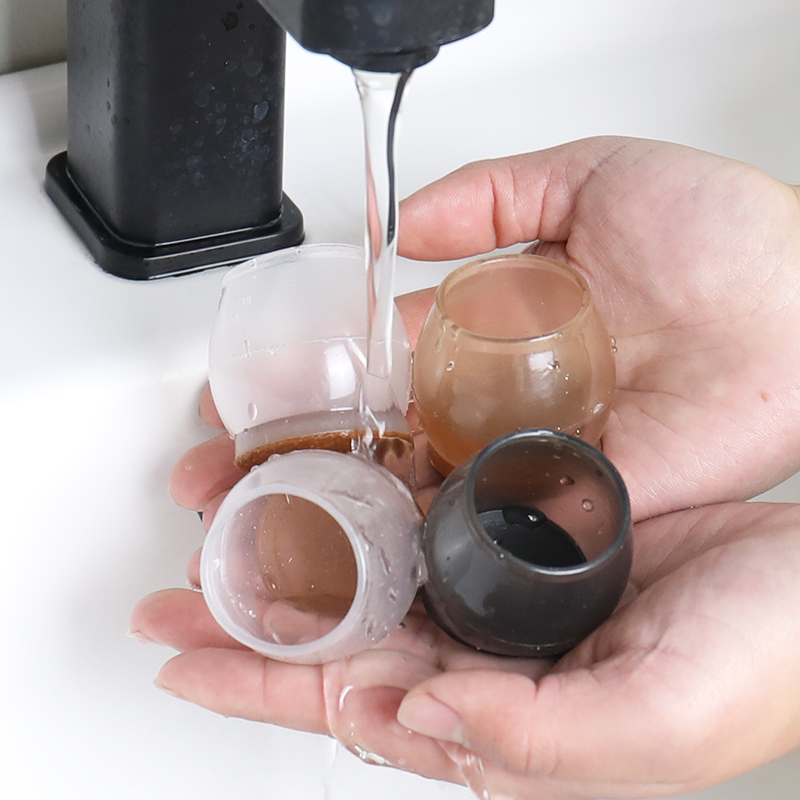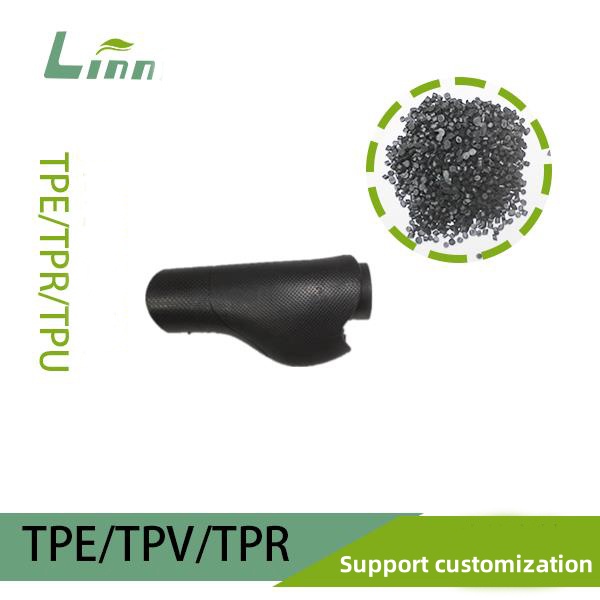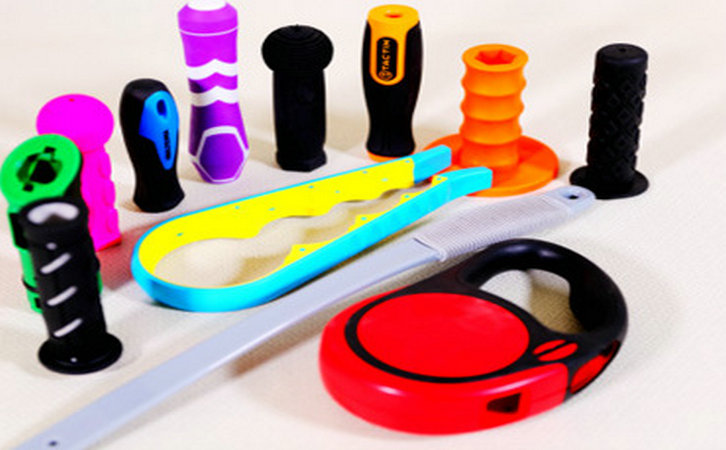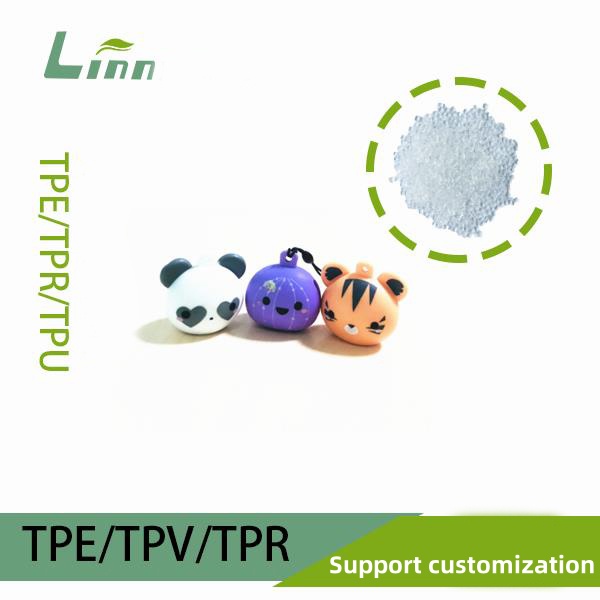As someone who’s spent years working with materials in industries ranging from footwear to industrial components, I often get questions about the properties of TPR (Thermoplastic Rubber). One query that’s come up recently is whether higher TPR hardness leads to higher viscosity. It’s a great question, especially for those diving into material selection for manufacturing or product design. At first glance, hardness and viscosity might seem related, as both influence how a material behaves. But the reality is a bit more nuanced. In this article, I’ll break down the relationship between TPR hardness and viscosity, explain how these properties work, and help you make sense of them for practical applications. Let’s dive in with a clear, human touch, as if we’re chatting over coffee about materials science!

What Are Hardness and Viscosity in TPR?
Before we tackle the main question, let’s define the two key properties in question: hardness and viscosity, specifically in the context of TPR.
Hardness: This refers to a material’s resistance to deformation, typically measured on the Shore hardness scale (e.g., Shore A or Shore D for TPR). A softer TPR might have a Shore A hardness of 20, feeling squishy like a rubber band, while a harder TPR at Shore A 80 feels more rigid, like a firm shoe sole.
Viscosity: In the context of TPR, viscosity describes the material’s resistance to flow when melted during processing (e.g., injection molding). It’s a measure of how “thick” or “runny” the molten TPR is. Lower viscosity means the material flows easily, while higher viscosity means it’s thicker and harder to process.
TPR, as a thermoplastic elastomer (TPE), is unique because it combines rubber-like elasticity with plastic-like processability. It’s melted and molded at high temperatures, so viscosity matters during manufacturing, while hardness determines the final product’s feel and performance. The question is: does increasing hardness (making TPR stiffer) also make its molten state thicker (higher viscosity)? Let’s explore.
The Relationship Between TPR Hardness and Viscosity
To answer whether higher TPR hardness means higher viscosity, we need to understand how TPR is formulated. TPR is typically a blend of polymers, plasticizers, and additives. The hardness is adjusted by tweaking the ratio of hard (plastic) to soft (rubber-like) components or by adding fillers like calcium carbonate. Viscosity, on the other hand, depends on the polymer’s molecular weight, additives, and processing conditions like temperature.
Here’s the key takeaway: Hardness and viscosity in TPR are not directly correlated. A harder TPR doesn’t automatically mean it has higher viscosity when melted, and vice versa. Let’s break it down:
Hardness Is a Solid-State Property:
Hardness is measured in the final, solidified product. A higher hardness (e.g., Shore A 90) results from a higher proportion of rigid polymer chains or fillers, making the material stiffer. This doesn’t necessarily affect how the material flows when melted.
Viscosity Is a Melt-State Property:
Viscosity is relevant during processing, when TPR is heated into a molten state. It’s influenced by the polymer’s molecular structure, chain length, and additives like plasticizers, which reduce viscosity by making the melt flow better.
No Direct Link:
Manufacturers can formulate TPR to have high hardness but low viscosity, or low hardness but high viscosity, by adjusting the recipe. For example, adding plasticizers can lower viscosity without softening the final product, while increasing molecular weight can raise viscosity without affecting hardness.
To illustrate, imagine two TPR grades:
Grade A: Shore A 80 (hard), low viscosity (flows easily when melted).
Grade B: Shore A 30 (soft), high viscosity (thick and sticky when melted).
This shows that hardness and viscosity can be independently controlled. Let’s dig deeper into how these properties are managed.

Factors Influencing TPR Hardness and Viscosity
To clarify why hardness and viscosity don’t always go hand in hand, here’s a table summarizing the factors that affect each property and their typical impact:
| Factor | Effect on Hardness | Effect on Viscosity | Notes |
|---|---|---|---|
| Polymer Composition | Higher plastic content increases hardness | Longer polymer chains increase viscosity | Adjusted during formulation |
| Plasticizers | Reduce hardness, making TPR softer | Lower viscosity, improving flow | Common in flexible TPR grades |
| Fillers (e.g., CaCO₃) | Increase hardness, add rigidity | Can increase viscosity slightly | Used to balance cost and performance |
| Processing Temp | No effect on final hardness | Higher temp lowers viscosity | Critical for molding efficiency |
From the table, you can see that the levers for controlling hardness (e.g., plasticizers, fillers) are different from those for viscosity (e.g., molecular weight, temperature). This flexibility allows manufacturers to tailor TPR for specific needs, like a hard but easy-to-process material for shoe soles or a soft but viscous material for grips.
Why Does This Matter in Real-World Applications?
Understanding the relationship (or lack thereof) between hardness and viscosity is crucial when choosing TPR for a product. Here’s why:
Manufacturing Efficiency:
During injection molding or extrusion, low viscosity is desirable because it allows TPR to fill molds quickly and uniformly. If you’re making a hard TPR product (e.g., a rigid handle), you’d want low viscosity to ensure smooth processing, regardless of the final hardness.
Product Performance:
Hardness determines how the product feels and performs. For example, a soft TPR (Shore A 20–40) is great for flexible shoe insoles, while a hard TPR (Shore A 70–90) suits durable shoe soles. Viscosity doesn’t affect the end user but impacts production quality.
Cost Considerations:
High-viscosity TPR may require higher processing temperatures or slower production speeds, increasing costs. Manufacturers often optimize viscosity to keep production efficient while achieving the desired hardness.
In my experience, I’ve seen companies struggle when they assume harder TPR means harder-to-process (higher viscosity) material. For instance, a colleague once worked on a project where a hard TPR (Shore A 85) was chosen for a tool grip, but its high viscosity caused molding defects. Switching to a low-viscosity TPR with the same hardness solved the issue without compromising the product.

Practical Examples: Hardness and Viscosity in Action
To make this concrete, let’s look at how TPR hardness and viscosity play out in real products:
Shoe Soles: A hard TPR (Shore A 70–80) is often used for durable sneaker soles. Manufacturers prefer low-viscosity TPR for easy molding, ensuring the sole is both tough and cost-effective to produce.
Medical Grips: Soft TPR (Shore A 30–50) is used for ergonomic grips on medical devices. Here, viscosity is kept low to ensure precise molding, even if the material is soft.
Toys: Flexible TPR toys (Shore A 20–40) may use higher-viscosity grades to achieve a slightly tacky feel, but this is a deliberate choice, not a direct result of hardness.
These examples show that hardness and viscosity are tailored to the product’s needs, not inherently linked.
My Journey with TPR: Lessons Learned
Over the years, I’ve worked with TPR in various projects, from designing shoe components to troubleshooting industrial seals. One memorable experience was helping a client develop a TPR-based phone case. They wanted a hard, durable case (Shore A 80) but were struggling with production because the TPR’s high viscosity caused uneven molding. After tweaking the formulation to lower viscosity while maintaining hardness, we got a product that was both tough and easy to manufacture.
Another time, I advised a startup making soft TPR insoles. They assumed a softer material would be harder to process, but we found a low-viscosity TPR that flowed beautifully, saving them time and money. These experiences taught me that hardness and viscosity are separate beasts, and understanding them is key to making smart material choices.

How to Choose the Right TPR for Your Project
If you’re working with TPR, here’s how to approach hardness and viscosity for your needs:
Define Hardness Needs:
Decide how hard or soft your product needs to be. Use the Shore A scale as a guide—lower values (20–50) for flexible items, higher values (70–90) for rigid ones.
Optimize for Processing:
Work with your supplier to select a TPR with appropriate viscosity. Low viscosity is better for complex molds or high-speed production, while higher viscosity might suit products needing a thicker, tackier feel.
Test and Prototype:
Always test TPR samples to ensure the hardness and viscosity align with your goals. Small changes in formulation can make a big difference.
Consider End Use:
Think about the product’s environment. For example, outdoor products need UV-resistant TPR, while indoor products might prioritize softness over durability.
Consult Experts:
If you’re unsure, talk to your material supplier or a materials engineer. They can recommend TPR grades that balance hardness, viscosity, and cost.
Common Misconceptions About TPR Hardness and Viscosity
I’ve heard plenty of myths about TPR over the years. Let’s clear up a few:
Myth: Harder TPR Is Always More Viscous
Not true! Hardness and viscosity are independently controlled through formulation. A hard TPR can have low viscosity for easy processing.
Myth: Soft TPR Is Easier to Process
Softness doesn’t guarantee low viscosity. Some soft TPRs have high viscosity, making them trickier to mold.
Myth: Viscosity Affects the Final Product
Viscosity only matters during processing. Once TPR solidifies, hardness and other properties take over.
Tip: Check Specifications
Always request a technical data sheet (TDS) from your supplier. It will list hardness, viscosity, and other properties, helping you make informed choices.

Conclusion
To answer the question: No, higher TPR hardness does not mean higher viscosity. These are distinct properties—hardness governs the final product’s feel, while viscosity affects how TPR behaves during manufacturing. By tweaking polymer blends, plasticizers, and processing conditions, manufacturers can create TPR with any combination of hardness and viscosity to suit specific needs.
Whether you’re designing a product or just curious about materials, understanding TPR’s properties can save you time, money, and headaches. I hope this article has shed light on the topic and given you the confidence to navigate TPR in your projects. Got more questions? Drop them below, and I’ll do my best to share what I’ve learned!
Related Q&A
1. How do I know what TPR hardness is right for my product?
Choose hardness based on the product’s function. Soft TPR (Shore A 20–50) is great for flexible items like insoles, while hard TPR (Shore A 70–90) suits durable parts like shoe soles. Test samples to confirm.
2. Can I lower TPR viscosity without changing hardness?
Yes, adding plasticizers or adjusting processing temperatures can lower viscosity while keeping hardness intact. Work with your supplier to find the right formulation.
3. Does high viscosity make TPR harder to process?
Yes, high-viscosity TPR flows less easily, requiring higher temperatures or slower molding speeds. This can increase production costs, so low-viscosity grades are often preferred.
4. Is TPR viscosity important for the end user?
No, viscosity only affects manufacturing. The end user cares about hardness, durability, and other solid-state properties.
5. How can I ensure my TPR product is high quality?
Request a technical data sheet, test prototypes, and work with a reputable supplier to ensure the TPR’s hardness, viscosity, and other properties meet your needs.

TPR Hardness vs Viscosity Guide
Key Properties
Hardness: Measured on the Shore A scale, determines the material’s rigidity or flexibility in its solid state.
Viscosity: Measures resistance to flow when TPR is melted, affecting processing ease.
Comparison Table
| Factor | Effect on Hardness | Effect on Viscosity | Notes |
|---|---|---|---|
| Polymer Composition | Higher plastic content increases hardness | Longer chains increase viscosity | Adjusted during formulation |
| Plasticizers | Reduce hardness, make TPR softer | Lower viscosity, improve flow | Common in flexible grades |
| Fillers (e.g., CaCO₃) | Increase hardness, add rigidity | Can increase viscosity slightly | Balances cost and performance |
| Processing Temp | No effect on final hardness | Higher temp lowers viscosity | Critical for molding efficiency |
Practical Tips
Define Hardness: Choose Shore A 20–50 for soft, flexible products; 70–90 for rigid, durable ones.
Optimize Viscosity: Low viscosity suits complex molds; high viscosity may be used for tacky textures.
Test Samples: Always prototype to verify hardness and processing behavior.
Consult Suppliers: Request technical data sheets for precise material specs.





